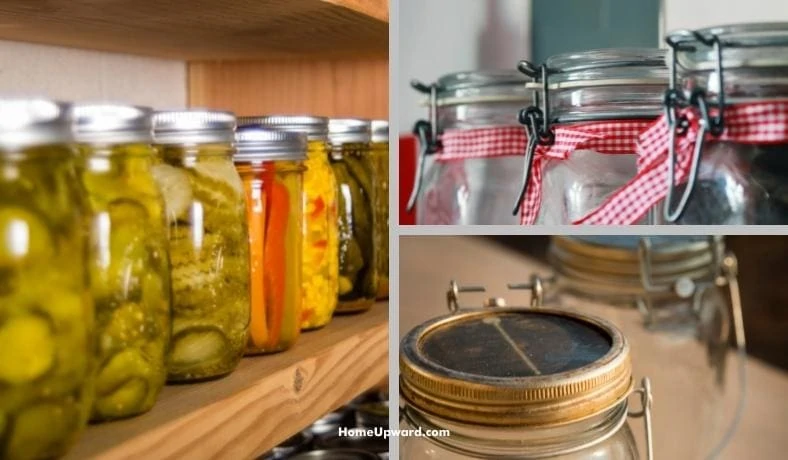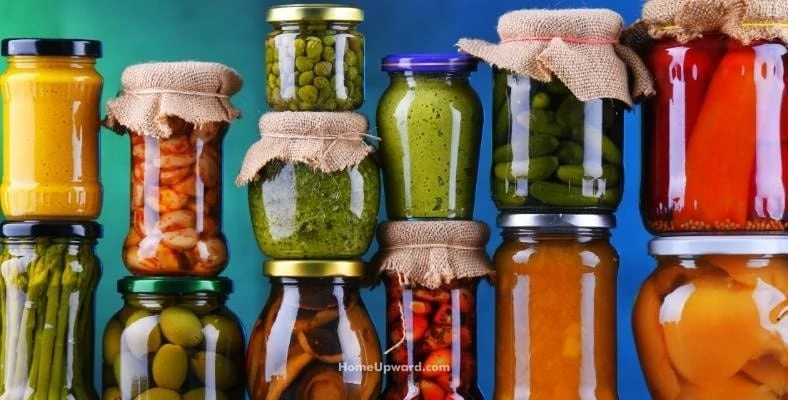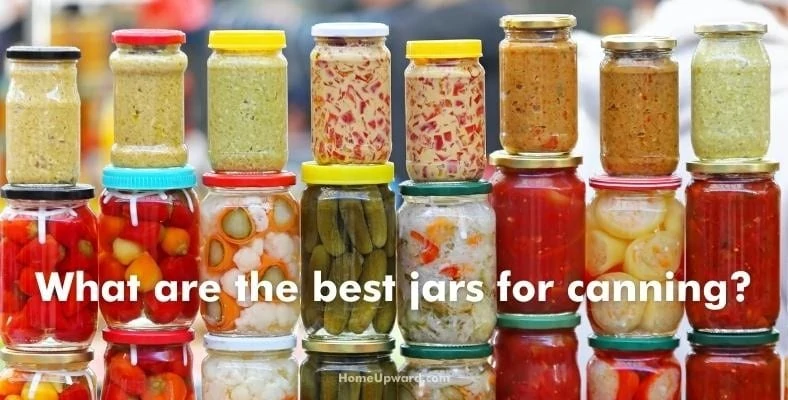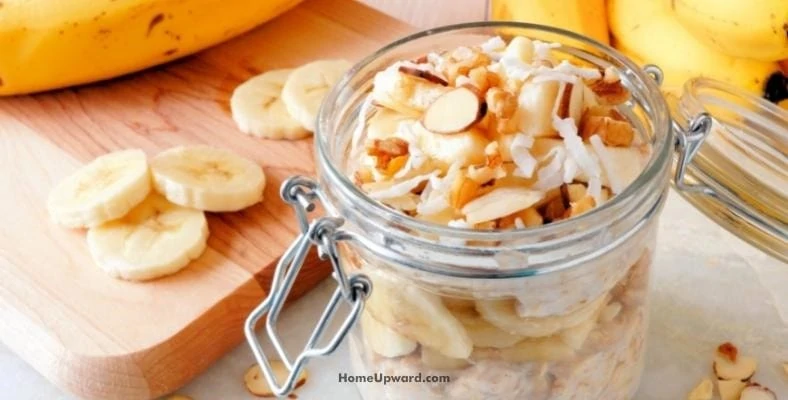Want to save the fruits, vegetables, meats, and other food you love? Mason canning jars are an excellent way to keep food preserved. For generations, these home canning jars have been used for safe and reliable food storage.
In this article you’ll learn the standard common sizes of Mason canning jars along with the types and other things to know.
Contents
The Sizes of Mason Canning Jars (Common Size Chart)
What Sizes Do Mason Jars Come In?
Mason jar sizes range from as small as 2 ouncies to 128 ounces (1 gallon) in size as you can see in the included chart above. These are:
- 2 oz (59 milliliter)
- 4 oz, also called quarter pint (125mL)
- 8 oz (half-pint size, 250mL)
- 12 oz (375mL)
- 16 oz, pint size (500mL)
- 24 oz (1 1/2 pint, 750mL)
- 32 oz (1 quart, 1,000mL)
- 64 oz (1/2 gallon, 1.9L)
- 128 oz (1 gallon, 3.8L)
There are also additional oddball sizes including larger than 1 gallon but as they’re not common I don’t list them here.
What size canning jar do I need?
- Most canning recipes call for a pint or quart glass canning jar.
- If you’re planning on making jellies, choose the smaller half-pint, jelly jar size. Various pint and quart mason jars can be found in any grocery store, big-box store, or farming supply store.
Types of Canning Jars
After choosing the best size don’t forget to pay attention to the proper type of canning jar for your recipe and the mouth size.
Canning jar mouth sizes and jar styles
Wide Mouth Jar Type
A wide mouth jar is an excellent option for easy pouring of tomato sauces or broths. Wide mouth jars also may be your only option if your ingredients are too large to fit into a regular mouth jar. Discs of pickles, whole tomatoes, or large cuts of meat are an excellent match for wide mouth jars.
Regular Mouth Jar Type
Regular mouth jars are the traditional choice for many canning recipes. If you have larger ingredients, grab a funnel when it’s time to pour into the jars. Make sure the funnel can withstand high temperatures and has strong sides to not melt or collapse in the process.
Shoulder vs Straight Jar Styles
If you picture a canning jar in your mind, you probably see a jar with a little shoulder at the top. This type of jar has a narrow neck at the top of the jar, providing a simple guide to leaving enough room at the top of the jar for the ingredients to expand and achieve a seal.
A straight jar is an excellent choice for long items you may be canning. If you want to have in-tact green beans or pickle spears or scoop from the jar a straight jar is the best choice.
What are the Best Jars for Canning?
When you try fresh preserving, it is best to choose official canning jars and canning lids. Reused glass jars that store pickles or mayonnaise will probably not withstand the pressure and heat needed for safe home food preservation.
Tips on Selecting the Right Canning Jar Size
The correct canning jar size will not only preserve your food safely but will save you money. The right size fits your ingredients while leaving a few inches of space at the top to help the jar seal when it cools.
If you have a smaller jar, the jar will become overfilled and won’t make a tight lid seal. This means bacteria and air will continue to enter the jar and spoil your food. If you have a larger jar, you risk wasting a valuable Ball jar and the jar lids, which are not reusable.
Most canning recipes will tell you the glass jar size needed for the recipe. If the recipe calls for a pint jar, but you wish to make a quart jar, review the National Center for Home Food Preservation to see the additional time needed to achieve a safe and delicious recipe.






